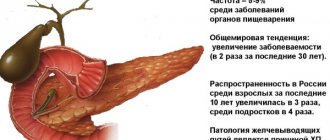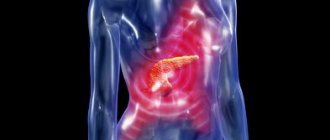The key to a successful prognosis in the treatment of pancreatitis is the combined use of drug therapy with non-drug methods of influencing the body. Yoga for pancreatitis is an excellent help on the path to healing.
Pancreatitis is an inflammatory disease of the pancreas, which occurs with severe pain and impaired digestive function. The symptoms cause discomfort to the person and in severe cases lead to temporary disability. In the absence of the necessary treatment, the acute process becomes chronic, which is difficult to treat.
general information
To achieve recovery, drug therapy alone is not enough; adequate physical activity is necessary. Incorrectly selected exercises lead to the same result as complete refusal of them - progression of the disease and worsening prognosis. The advantage of yoga is the balance between the load and the body’s capabilities.
You can start yoga classes for acute pancreatitis during the recovery period. Yoga for chronic pancreatitis is especially indicated during the period of remission of the disease.
Advice! Before starting yoga classes, make sure there are no other acute diseases!
Traditional medicine confirms the fact that with regular exercise, a person’s organ function is normalized, the inflammatory process is minimized, and pain subsides. The psychological component of yoga is important, as it relieves a person’s anxiety level and increases resistance to stressful situations.
List of other exercises
As mentioned earlier, physical activity is also important, because it will have a beneficial effect on the organs of the digestive system in question. It is worth mentioning that before each lesson it is important to repeat the breathing complex that you do every day during exercise.
This way you can prepare the organ for stress. Let us remind you once again that there should be no intense or heavy loads! Here's what you should do:
- Start walking slowly around the apartment, let it take about a minute.
- Now continue walking, but only on your toes. Keep your hands behind your head, and this should continue for 40 seconds.
- Start walking by raising your legs, but without bending your knees.
- Make jerks with your arms without stopping, alternating this with stretching your arms as high as possible.
- Rotate your elbows.
- Slowly raise your arms while taking a deep breath, and then smoothly lower them while exhaling.
- Lie on your back with your arms raised. After this, start raising your legs without bending them. Raise your legs one at a time.
- Continue to lie on your back and bend your legs at the knees, then begin to tilt them to the side.
- Roll over onto your stomach and extend your legs, but do not bend them.
- Repeat the first type of load, that is, just walk slowly.
Note! Physical exercise alone will not be enough for you to successfully cope with the ailments in question; constant monitoring by a specialist is also important, and in some situations, taking medications and a balanced diet.
The effects of yoga on the pancreas
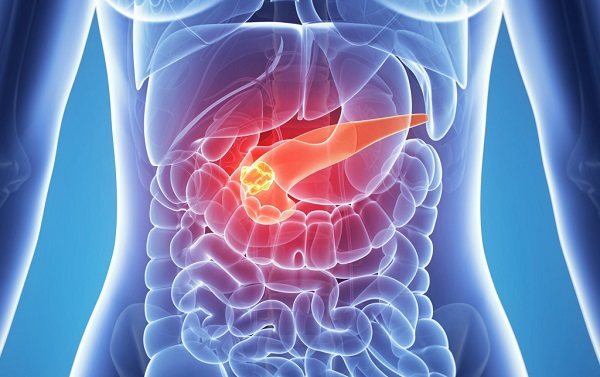
The use of a set of special asanas that affect the organ can lead to the following results:
- Improved blood supply to the organ, as a result, sufficient oxygen and energy supply to the organ.
- Launching reparative processes by improving metabolism and removing inflammatory products from the bloodstream.
- Improving the functioning of neighboring organs - intestines, stomach, gallbladder, liver and reducing the load on the pancreas.
- Elimination of pain syndrome associated with irritation of nerve endings in the organ by inflammatory agents and muscle spasm, which occurs as a reflex to severe pain.
How to do exercises?
The first thing that should be discussed is the importance of exercise for cholecystitis, as well as pancreatitis. It is worth noting that gymnastics exercises for pancreatitis and cholecystitis do not involve any serious loads, since they are strictly prohibited for the diseases in question; this entire organ can react horribly to such loads.
For this reason, exercise for pancreatitis can be called “exercise for the pancreas,” because the objectives of such physical exercise are exclusively therapeutic, and they are aimed at maintaining the health of this organ. During exercise, breathing exercises for pancreatitis are used exclusively, but before considering a set of exercises, it is important to clarify that it should be performed in a comfortable position, and there are no strict restrictions.
Here are the basic exercises:
- Inhale as forcefully as possible, then exhale. Having sucked in your stomach, you should hold your breath for a short time.
- Repeat the above exercise, but try to inflate your stomach as you inhale.
- Halfway through your inhalation, stop and hold your breath, then continue inhaling until the end. When the inhalation is maximum, hold your breath again, inflate your stomach and relax it several times, and it is important to do all this slowly. Relax.
- As you exhale, try to pull in your stomach as much as possible, hold your breath and try to relax completely. Now inhale, inflating your stomach, and exhale again.
Please note that each of these exercises must be repeated at least 4 times; it is also important not to skip days, because exercises must be done constantly. Thus, you will achieve a significant improvement in blood circulation, and also help the body overcome the inflammatory process and normalize the functions of the pancreas.
Important! Despite everything that has been said above, no exercises for the pancreas prescribed for pancreatitis can help in some cases, since it is necessary to obtain medical help. For this reason, if pancreatitis worsens, it is important to immediately consult a doctor.
Many patients make the mistake of thinking that exercises for pancreatitis will completely improve their health. Such people begin to eat junk food, and sometimes they even use chewing gum, despite the fact that chewing gum is strictly prohibited for pancreatitis.
This chewing process can cause an aggravation in one go! Cholecystitis, which is an inflammatory process of the gallbladder, even with physical activity, also cannot be protected from relapse.
Complex of asanas for pancreatitis

Before you start performing asanas, you need to follow some recommendations:
- At first, you should contact a specialist and develop an individual set of exercises taking into account your physical fitness.
- Classes should be held regularly and last from 30 to 60 minutes.
- A set of exercises does not replace drug treatment and diet.
- It is worth starting classes with simple asanas.
- Training is carried out on a special mat that does not slip and does not accumulate static electricity. Clothes should be comfortable.
- It is recommended to refrain from eating before class.
Asanas allow you to obtain an adequate level of stress on the body and do not lead to depletion of reserve forces.
The exercises used in the classes provide improvement not only in physical health, but also in mental health.
Back stretch (Paschimottanasana pose)
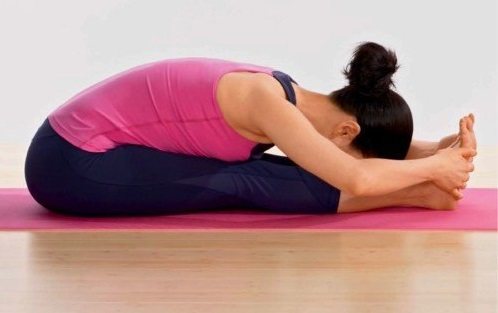
Sitting on the floor with your legs extended, while inhaling, gently bend forward, trying to reach your big toes with your fingers and clasp them. Arms should be straightened, head raised up, back arched. As you exhale, lower your elbows to the floor, pressing your head and chest to your legs. The duration of stay in the pose is up to 5 minutes.
Abdominal Lock (Uddiyana Bandha Pose)
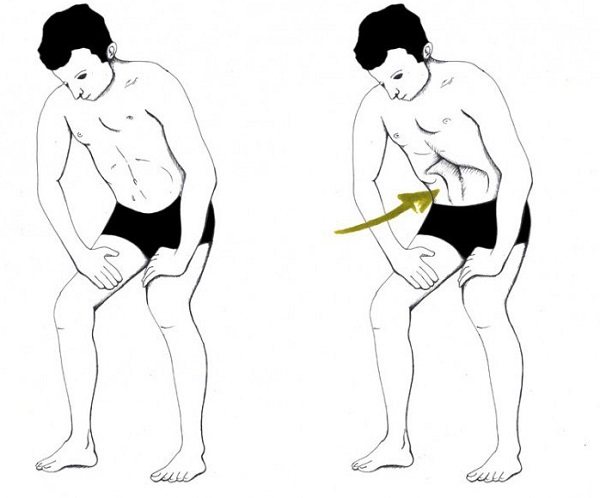
Feet are shoulder-width apart, knees slightly bent. The torso is slightly tilted forward and the palms are placed on the hips. As you exhale, the chin is pressed against the subclavian cavity, the stomach is drawn in and the breath is held for a few seconds, after exhalation the stomach relaxes and the head rises.
Wind Release Pose (Pavanamuktasana)
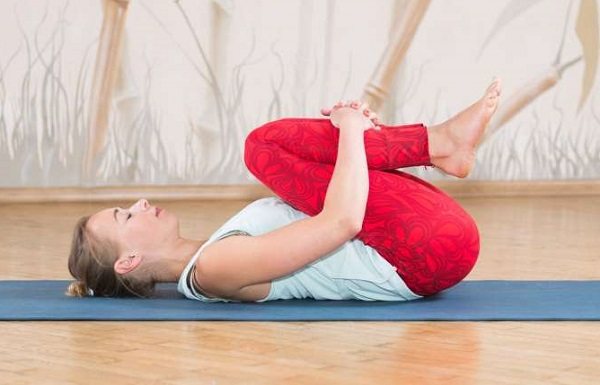
Lying on your back, arms extended along the body. As you inhale, the right leg bends at the hip and knee joints and presses against the body. The left hand clasps the knee, the right hand secures the ankle. As you exhale, the arms and legs return to their original position, then the leg changes to the left leg and everything is repeated again. After this, both legs are pressed against the stomach with your hands and held in this position for 10 seconds.
Each asana should be performed several times.
General recommendations for exercise therapy after relieving an exacerbation
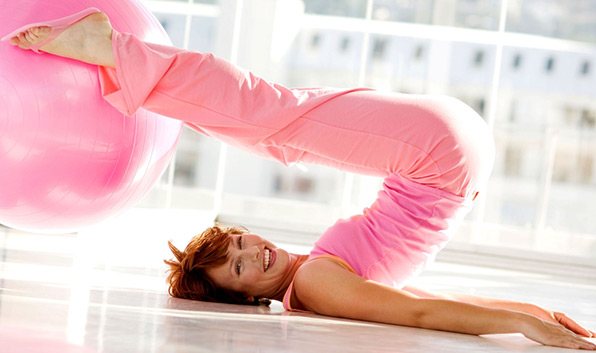
When the disease is in acute form, all physical activity should be excluded. When periods of exacerbation occur, a person feels severe pain and is not always able to perform even minor physical activity. He tries to take the most comfortable position so that the pain syndrome is not so pronounced. In this case, bed rest is prescribed.
After the pain is eliminated, the patient can begin exercises for the pancreas for pancreatitis. Gymnastics plays an important role in the healing process. It can be performed at home, in the fresh air and without special equipment.
After the patient is discharged from the hospital, it is recommended to perform simple manipulations that will have an equally effective effect.
Morning exercises and breathing exercises
Don’t be too lazy to make it a rule to warm up your muscles every day by doing a simple set of morning exercises.
Light turns left and right, deep inhalations and exhalations involving the abdomen, holding your breath for a few seconds are simple and useful exercises for an inflamed pancreas.
Many people are interested in whether it is possible to pump up the press with pancreatitis? No, you can’t do this, but doing light special exercises is not only possible, but also necessary. They strengthen the muscles of internal organs, including the pancreas, which, in turn, has a positive effect on the general condition of the patient.
Regular walking
Clean air is always good for the body, especially when you are in a park or forest. At the same time, it is very important not only to sit on a bench, but to make some kind of movement.
It is advisable to spend at least 15-30 minutes outside. Walking must be combined with breathing exercises, which helps improve material metabolism and gas exchange in the lungs and stimulate blood circulation.
It is recommended to inhale the air slowly and deeply, counting 3-4 steps. Then exhale smoothly without holding your breath. If you experience discomfort or dizziness while performing such actions, you must breathe normally. When the breathing process returns to normal, you can repeat it again, but with the duration of inhalation and exhalation for 1-2 counts.
Mudras for pancreatitis
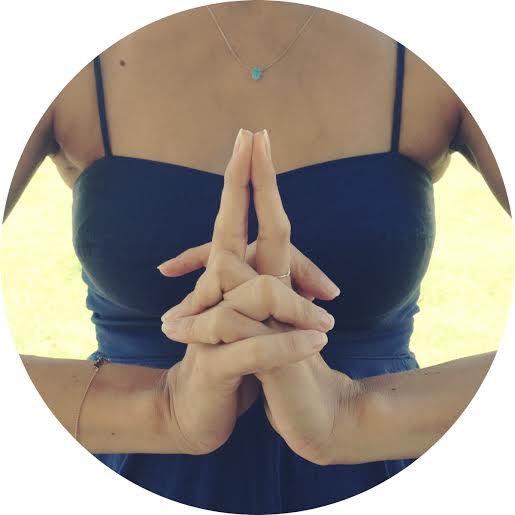
Matangi mudra
It is believed that human hands are permeated with energy channels that are responsible for the functioning of internal organs. When the hand is positioned in a certain way, it is possible to open channels to influence the pancreas. The set of techniques performed is called mudras.
Mudras for the pancreas are quite simple to perform and effective with constant use:
- Matangi - mudra is used to reduce the pain of pancreatitis and improves the functioning of the organ. The hands close at the level of the solar plexus, the middle fingers are connected to each other. At this moment, you need to focus on breathing in the thoracic region.
- Apanama - mudra is used to relieve inflammation in the organ. The hands are clenched into a fist, then the index fingers and little fingers are straightened. The hands in this position are lowered onto the hips, and the person tries to completely relax for 10-15 minutes.
Correct execution of exercises helps to increase the effectiveness of the treatment received. Yoga helps not only eliminate inflammation, but also strengthen the body as a whole. An integrated approach to the treatment of any disease is the key to a speedy recovery.
Physical exercises for the pancreas in case of disease
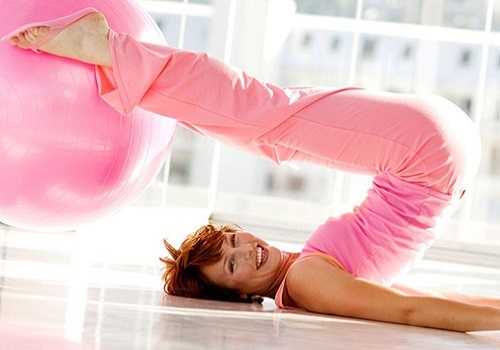
The inflammatory process that develops in the pancreas during pancreatitis is characterized by edema, hyperemia of the organ tissue, impaired circulation, lymphatic drainage, and stagnation of pancreatic juice inside the ducts and the gland itself. Subsequently, during a long-term course of the chronic pathological process, part of the parenchymal tissue is replaced by connective tissue, stones can form in the ducts (deposition of calcium salts), and the functions of the organ - exocrine and endocrine - are seriously impaired. This can lead to the development of serious digestive problems and diabetes if the doctor’s recommendations for treatment and prevention are not followed.
For timely effective treatment and prevention of complications, an integrated approach is required: taking all prescribed medications, following a therapeutic diet, and regular exercise with a specially selected set of physical therapy.
Exercises for chronic pancreatitis
After chronic inflammation of the pancreas has entered the stage of stable, long-term remission, the doctor recommends that the patient exercise regularly. In addition to the various breathing exercises described above, you can add other gymnastic exercises that are useful for the condition of the pancreas, the entire digestive tract, and general human health:
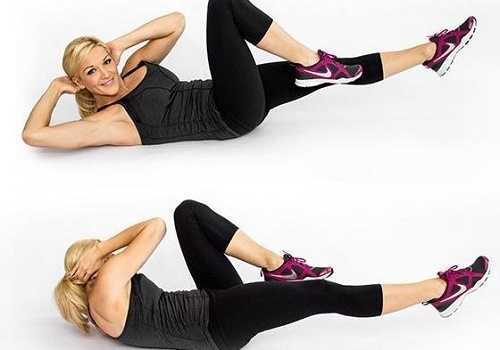
Such training should be regular, easy to perform, without causing any discomfort to the patient.
Gymnastics for cholecystitis and pancreatitis
Inflammation of the pancreas usually occurs against the background of pathologies of the liver, gallbladder, and bile ducts. Cholecystitis or cholelithiasis often accompany the development of pancreatitis. The purpose of performing exercises for these diseases is to normalize the blood supply to organ cells, improve the outflow of bile from the gallbladder and pancreatic juice from the lumen of the pancreas into the duodenum.
Breathing exercises and other simple exercises described above do an excellent job of this task.
Before starting physical therapy for illness, you must make sure that there are no contraindications (acute purulent inflammation, tissue necrosis, the presence of large stones inside the gallbladder or its ducts).
Yoga exercises
Yoga classes, judging by the reviews of patients and doctors, help to improve the health of the body and to recover faster after an exacerbation. It is recommended to perform simple exercises accompanied by stretching of certain muscle groups and specific breathing techniques. In yoga, exercises are called asanas, they have peculiar names:
- uddiyana bandha,
paschimottanasana,
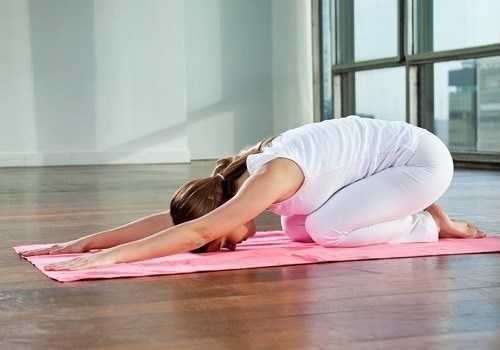
Yoga must be practiced under the supervision of a trained instructor, since to achieve the desired effect, asanas must be performed correctly, but it may be impossible to do this on your own.
Simple breathing exercises
It is useful to do exercises daily. Before starting, you should take a comfortable position (sit, lie down).
- Take a long breath in and out. Pull your stomach towards your spine and don’t breathe for a while.
- Take a deep breath and exhale again. Inflate your stomach well and do not breathe.
- Start taking deep breaths. When you reach the middle, stop for a moment, then continue breathing. Stop and inflate your stomach for three counts, and retract for the next six counts. At the end of the exercise, inflate your stomach at maximum speed and pull it in without pausing. Relax your muscles.
- As you exhale, intensely draw in your abdominal muscles, stop breathing, and relax. Inhaling, inflate your stomach as much as possible, and exhaling, pull it towards the spine.
The complex should be performed starting with four repetitions, gradually increasing to nine. You are supposed to exercise twice daily. If you feel very tired, stop exercising.
Pancreatic massage is what this gymnastics is called.
Therapeutic exercise as a preventive measure for pancreatic diseases
Adequately selected regular physical activity improves heart function, the delivery of nutrients and oxygen through the blood to all tissues and organs of the human body, restores functional activity and promotes regeneration of the pancreas. In combination with following a therapeutic diet and taking the necessary medications, physical therapy contributes to the effective prevention of inflammation of the pancreas.
Physical therapy is a set of specially selected exercises. They promote rapid recovery after pancreatitis and prevent the development of complications. The most effective options for exercise therapy for diseases of the digestive system are considered to be a variety of breathing exercises. A complex of therapeutic exercises is selected by a specialist taking into account his condition and the presence of concomitant pathology.
source





